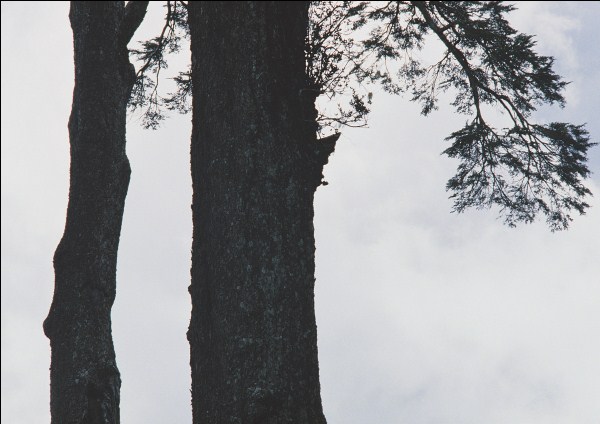Dear All,
Wouldn’t it be nice if living in the present was something that came naturally to us, rather than our having to exert all this effort to drag our minds back into the here and now and away from all our frenetic mental over activity? Well, the good news is that natural present moment awareness is definitely possible, and I can vouch for that. The challenge is that it takes some effort to get to the place of no effort! In the article below I describe what natural present moment awareness is, and how we can start building experience of it into our daily life.
Yours in the spirit of natural presence,
Toby
 When Present Moment Awareness Comes Naturally
When Present Moment Awareness Comes Naturally
When people come to me for meditation coaching, quite often I will not necessarily emphasize formal meditation in those sessions, so much as a deeper sense of self knowledge and the natural inner harmony that arises from that increase in self knowledge. In this article I want to talk about how present moment awareness can really be seen as a side effect of inner harmony, rather than something that we bring into existence through sheer force of will.
Often in traditional meditation training we are taught how to bring our mind into the present moment by focusing on an object such as the breathing, and learning to take our mind out of the busy linear timeline that it is so often locked into through force of will. We can achieve a certain amount of success in this is if we become familiar with such a meditation practice, but the challenge with it is that it always requires an (often relatively strenuous) act of will, and does not address many of the reasons why our mindACTIVELY AVOIDS the present moment, and SEEKS OUT the “comfort” of distractions.
Here is my formula for natural present moment awareness:
“Present moment awareness is a natural side product that arises when the instinctive and rational minds move from conflict with each other to harmony with each other.”
Synonyms for the instinctive and rational minds are:
- The conscious mind and unconscious mind
- The body self (or biological self) and the egoic (or conceptual) self.
My basic proposition is this, that whenever these two minds, instinctive and rational, conscious and unconscious are in conflict, then this conflict throws us out of the present moment and traps us in that state of distracted conflict.
Whenever the instinctive and rational minds are in harmony with each other, they form a greater or larger self awareness that is naturally and easily grounded in the flow of the present moment.
So, if you want to learn to live a more relaxing life centered in “presence”, then sure, learn a formal meditation technique, but secondly, and equally (perhaps more importantly)work to resolve the stress fear, anxieties that arise from the conflict between your conscious and unconscious minds, your body-self and your egoic (conceptual self).
The next time you find yourself distracted, mentally uncomfortable, unable to focus in the here and now, ask yourself the question “Where is the inner conflict coming from that is preventing me from relaxing naturally into the present moment?”
If you can answer this question successfully and identify the area of conflict, then are half way to resolving it. One of the other keys to being able to resolve the conflict successfully is being able to create an arena of communication where the conscious and unconscious minds can “have a bit of a chat” and come to an appropriate solution to their conflicts. Here are a couple of examples:
- If through enquiry you discover that the unconscious mind is very angry about something, and that the conscious mind has been repressing that anger (hence the conflict), the conscious mind can acknowledge the hurt in the unconscious mind, and perhaps engage in positive action to resolve the situation causing the anger, whilst the unconscious mind can then make the agreement to stop “acting out” so much and disturbing our inner peace.
- If the instinctive self has been feeling “sexually frisky”, and the rational mind has been repressing those feelings (because for example it feels them to be inappropriate), then the two minds can have a communication, and perhaps the conscious mind might agree to acknowledge the feelings of the instinctive self, and if possible find a way of expressing them in an appropriate way, and the instinctive self will most probably be MUCH MORE HAPPY to practice contentment and self control now that the conscious mind has acknowledged and expressed recognition if its needs.
This type of dialog work or inner communication work takes a bit of work to develop the skill (which is one of the things that I often do in my coaching work with clients), but the result is a far greater resolution of the inner conflict between the two minds, and an entirely natural improvement in our inner peace, ability to concentrate and rest in the present moment.
Beginning to practice:
As a simple way of starting this work, whenever you notice your mind is distracted, avoiding the present moment, ill at ease, discontent, anxious, ask yourself the question I placed above:
“Where is the inner conflict (between my two minds) coming from that is preventing me from relaxing naturally into the present moment?”
The answers that come back to you questioning in this way are actually the answers that will help you directly build self knowledge and inner wisdom. Articulating your answers to this question as you ask it each day are the building blocks for a gradual increase in your inner peace, natural concentration and effortless present moment awareness.
© Toby Ouvry 2012, you are welcome to use or share this article, but please cite Toby as the source and include reference to his website www.tobyouvry.com
 The Inevitability of the Present Moment
The Inevitability of the Present Moment The Pattern of Meditation
The Pattern of Meditation On Real Men, Daffodils and Chihuahuas
On Real Men, Daffodils and Chihuahuas The Inner Sharks of the Mind
The Inner Sharks of the Mind Article of the Week:
Article of the Week: Mindful Eating As Your Object of Meditation
Mindful Eating As Your Object of Meditation Taking Light-Heartedness as Your Object of Meditation
Taking Light-Heartedness as Your Object of Meditation
